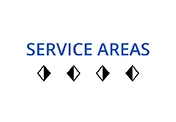Shingled Roofing vs. Flat Roofing – What’s the Difference?
If you’re a business owner, one of the first concerns you may have for your building is having a solid roof over your head. You may be wondering what the difference is between flat and shingled roofing. Here are some of the main differences between these styles of roofing and how to tell which style you need.
Whether your office is in Herndon VA or Montgomery County MD, owning a business can be tough, and knowing what type of roof you need is something you’ll need to figure out when you need repairs on your building. There are a few key things to make it clear whether or not you’re in need of a flat roof.
First of all, if you work out of a commercial building, you typically are in need of flat roofing services. Most commercial buildings have a similar box design. This is because when business districts were first designed in most areas, they were made for efficiency, not for looks. This means that your building will more often than not need flat roof services.
Another sign that points to the fact that you need a flat roof are that there isn’t a pitch in your roof. For most roofs, you’re used to seeing that roofing design associated with homes. This type of pitch indicates that you’re in need of either a metal roof or a shingle roof. For most flat roofs, you won’t be able to see them from the ground. You typically have to actually stand on the roof to see the pitch.
Now that you know some simple signs of whether or not you need a flat roof, here are some of the key differences that may help you choose which one you need when getting a roof replacement. If you’re constructing the building for your business, you have tons of flexibility in terms of what type of roofing protection you want.
Price
For both styles of roofing, the price is typically the first thing you want to decide on. Whenever you’re making an investment in your business, a budget always has to be in mind. When it comes to a shingled roof, you typically spend a lot more money. This is because of the cost of materials and the time it takes to make the installation. If there is any sort of water damage to the wood underneath the old shingles, you need to replace that wood so it doesn’t get soft and allow water into your home. This cost alone will drive up the price of your new roof. Also, depending on the size of the roofing crew working on your home, a full roof replacement done correctly can take up to a week. While some people may think this is a slow time frame, doing the right job takes time and dedication.
On the flip side, a flat roof is relatively inexpensive compared to a shingled roof. A flat roof uses far fewer materials, which also means that the job can be done quicker. This doesn’t necessarily take away from the quality of the roof, which is why many commercial businesses choose to go with a flat roof.
Longevity
Another thing you want to keep in mind when installing a roof is the longevity of each type of roof. For shingled roofs, according to Home Advisor, you can typically expect to get anywhere from 20 to 50 years out of the roof, depending on the climate. This means for that amount of time, you won’t have to worry about any serious repairs unless something punctures the roof. This can occur during a storm or after heavy snowfall.
On the other hand, a flat roof can last for as little as 10 years. This means that there is more maintenance involved in keeping up with a flat roof. While this can change based on the types of materials you use on your roof, it’s important to know that many commercial business owners will have their roofs resealed many times over. This is because a flat roof can more easily be punctured compared to a pitched roof. With a pitched roof, things naturally want to roll off of the roof, while a flat roof will catch things like tree limbs and debris. So while a flat roof is less expensive, you’ll also be putting a lot more effort into maintaining it, depending on the material you use.
Extra Space
One argument that has been made for flat roofs is the fact that a flat roof creates more space for you to utilize. Many people who live in a building with a flat roof will use that space like a patio. You can host friends and family for a nice meal outside (as long as you are within the weight capacity). Other occupants use the space for storage. With a pitched shingled roof, the roof basically only has the one purpose of protecting your home. If you walk on a pitched roof and slip, you can take some shingles along with you. With one misstep on a pitched roof, you can end up with both a hospital bill and a roof repair bill.
Damage
When it comes to your roof, you want to make sure that it can stand up to a good amount of damage. We talked about different things that can puncture your roof, but what can also prevent that is the quality of your roof. When it comes to shingled roofing, what really protects the roof is the layer of wood underneath the shingles. This is usually a thicker material, making it easier for a shingled roof to reflect things.
With a flat roof, you’re taking a bit more of a risk. Although there can be wood underneath the roofing material, any standing water on a flat roof will have a higher chance of getting into your building. The material that is used to reseal a flat roof is also soft, making it easy to punch a hole in. While a pitched roof does seem more durable, it can only be utilized if your building will work with it.
When working with either one of these roofs, it’s important to know the steps to take in order to get the roof done. Not all steps for roofing are the same, and when it comes to flat roofs and pitched roofs, it’s important to know the difference. Here are some common roofing steps that these roofing styles don’t share.
Shingling
For a pitched roof, it’s extremely common to get the roof shingled. While shingling is more expensive than flat roof installation, it’s less expensive than metal roof installation. This is why most homeowners choose to reshingle when the shingles are worn out. This is a must for a pitched roof so that the water drains correctly. If you leave your pitched roof bare, the wood on your roof will eventually rot and allow water to infiltrate the structure of your building. So, while shingling is something that’s necessary for many roofs, this is the opposite for a flat roof.
What happens with many flat roofs is that water tends to stand on the roof. Typically this isn’t a problem because the flat roof is reinforced. Something that can disrupt this is shingling your flat roof. Because the roof is flat, any punctures in the roof will lead to leaks in your building. This is why people don’t shingle their flat roofs: it will lead to problems that will cost you more and more money. Although shingles protect roofs, the added holes from the nail utilized in shingling are a big issue for flat roofs.
Re-Sealing
A common practice with flat roofs is re-sealing the roof every season. This is done for multiple reasons. The first reason is to fill any small holes that may have been created in your roof. While nails are one thing that can create a hole, you’ll find that many different things can blow on top of your flat roof and cause damage. Another reason re-sealing is so important is that it creates a reflective barrier that saves the energy used in your building. On those really hot days, a reflective roof can save you a ton of money.
For a pitched roof, re-sealing just adds more of an expense to your already installed roof. First of all, you wouldn’t use the same material to seal a flat roof as you would a shingled roof. Shingles work best with tar, but the issue with tar is that as it gets hotter, it melts. So although there is already tar in the shingles you installed, adding more can result in overheating your building along with wasting money.
The Importance of Hiring a Good Roofer
Now that you have an idea of what type of roof you want to put onto your building, you need to choose the right roofing contractor to get the job done. This is significant because not every roofer does work on flat roofs. There are many roofing companies out there that work exclusively on residential homes. The other thing is even if a company says they work on flat roofs, you want to hire someone that has experience in this field. Although flat roofs are generally cheaper, it doesn’t change the fact that your project still needs to be done correctly. In order to get a project like this done though, you also need to hire someone with the correct tools for the job. Some crews will do the job with the entirely wrong tools, meaning that there’s a high risk that something goes wrong. Hiring a crew with the most up to date materials is key to getting a good job done.
A way to check if the company you’re working with has the right tools is to check out their website. Stop by and see what services they offer. This will usually be accompanied by the years of experience they have in the industry. Once you settle on a company though, it’s still a good idea to have them come to your building in person to make sure they can back their experience up.
The Estimate
No matter what type of roof you want, the estimate is a chance for you to meet your potential roofer and make sure they know what they’re doing. While they’re doing their appraisal, it’s important to ask the employee a couple of questions. First of all, you can ask if they’ve done any work in the area. If they have, you can also ask if there are any examples close by that you can see. This will help you get a better understanding of what their standard for quality is. You can also ask what their time frame might be. Although a flat roof will get done quicker than a shingled roof, there’s no point in hiring the company if they’re booking six months out. You want to be able to have your roof done and ready to do in a timely manner so that your property is safe.
It’s also helpful to ask if the crew is fully insured. When you have anyone working on your roof, the chances of a fall can be high. If the crew isn’t insured, they can end up suing you for falling on your property. Make sure the crew has insurance so that this isn’t a problem you’ll run into. Another question that can be helpful to ask is if the owner of the company will be on the job. While some crews are reliable enough to do a job on their own, and owner will typically have more experience than his crew. No matter how big or small the crew is an owner that is hands-on means a company that cares about every job they’re on. The last thing to make sure of is if the company you’re working with is local to your area. A local company has the benefit of being right around the corner from the job site. This means you get more specific attention for the project that you need to be done.
If you’re in need of roofing contractors in Virginia, don’t be afraid to give us a call! We have the experience to be able to get your roofing job done right, no matter what style of roof you need.











